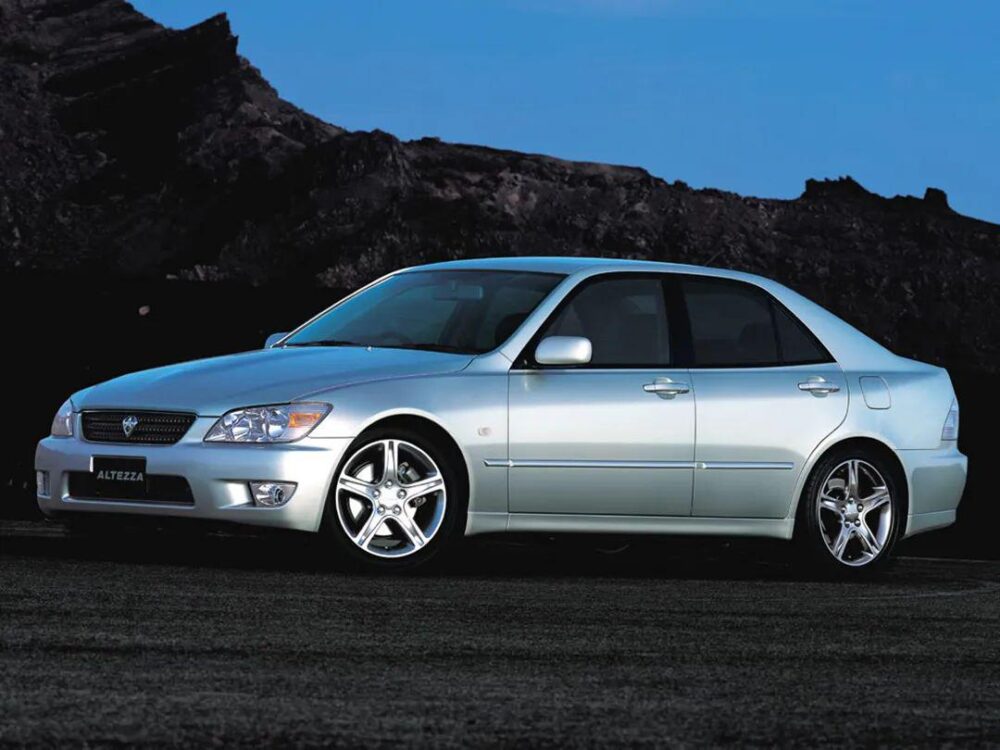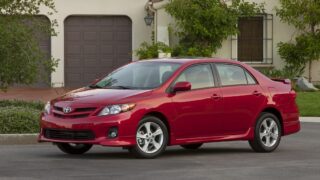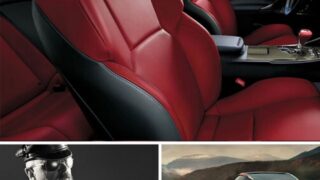Lexus IS History: Making Perfection Go Fast
Join us for a deep dive into the history behind the up-and-coming classics, the first-gen Lexus IS / Toyota Altezza sports sedans.
By the mid-90s, Lexus had firm footholds in the US and European markets with a variety of luxury models. The Lexus badge graced many now-legendary models, from the venerable off-roading LX series to the dignified executive LS. But the automotive markets in both Japan and abroad were rapidly shifting gears, and Lexus was struggling to keep up. People simply didn’t see Lexus models as cool. Only one model, the SC, was considered “sporty.” But that shouldn’t be a massive consideration for a maker of respectable automobiles with a reputation for perfection… right?
Postmodern Japanese culture isn’t particularly well-known for risk-taking. More conservative minds within Toyota might’ve said that Lexus had a good thing going, so keep doing that. By the end of the 3rd-gen Supra, a tenth of the vehicles were sold in comparison to where figures were in the late 80’s. The Mark IV Supra looked promising, but sales figures said otherwise. Other manufacturers might’ve cut their losses in the sports car market. Fortunately for us, however, this was peak mid-90s Toyota and Lexus we’re talking about. They know what they’re doing.
Creating the Perfect Recipe
The year is 1993. The brand-new Mark IV Supra debuts in Japan, blowing the doors off even Ferrari Testarossas. A fully-spec’d factory A80 Supra races to 60 in under 5 seconds with ease. Much like the AE86 of years past, Toyota built a solid reputation for affordable speed. With the debut of this latest supercar-killer, that gave some of the guys at Lexus a little inspiration.
Both the AE86 and Supra saw tremendous price spikes in recent years due to their popularity. For example, a 1993 Turbo Supra commands an average of $84,000 in January 2022, easily doubling its $39,900 MSRP.
Combining speed with luxury wasn’t exactly new by this point. Many luxury automakers already had firm footholds in the sports sedan market, with BMW’s M-division and Mercedes-AMG, for example. Domestically, vehicles such as the Mitsubishi Lancer Evolution and Subaru WRX were making waves as well. But there was a notable discrepancy between the former and latter. Luxury sports sedans were often too expensive for the entry-level enthusiast, and your straight-up tuners didn’t have the same feel as something more dignified. The idea was thus: Combine the basics of Toyota’s famed sports cars with Lexus’s prestige. The car was proposed out of the gate with the same principles as the AE86 and Supra. It’s gotta be front-engine, rear-drive, manual gearbox, and highly modifiable. Combine that with a mid-size entry-level luxury platform wearing the Lexus badge. Naturally, Toyota had just the guy for the job.
Step 1: Acquire Only the Finest Ingredients for Your Recipe
The man responsible for proposing this formula was chief engineer Nobuaki Katayama. Katayama-san, a former racing driver himself, headed development of both the AE86 and the A80 Supra, in addition to working within various racing series such as the WRC, JGTC, and Le Mans. Under his guidance, quite a few engineers within both Toyota and Lexus designed cars that were both fast and reliable. His principle achievement with Lexus prior to 1994 was the Lexus SC, designed as a competitor to the likes of the Mercedes CL, Jaguar XJS, and Bentley Continental. The idea wasn’t to create a supercar; that would come later. Rather, this was to be an affordable yet sporty luxury fun-box for the more discerning enthusiast.
The Lexus SC 300 debuted in Japan as the third generation of Toyota Soarer, using factory code Z30.
With the SC, a lot of the ingredients were already in place. The car featured the venerable 2JZ engine from standard, and was available with either a W-series or A-series manual or automatic, respectively. In addition, the 1G-FE and 3S-GE engines were still in widespread use. By this time, all three engines had a firm reputation for being hideously overengineered, heavily modifiable workhorses. The gearboxes were revered as well, being used even today to replace factory transmissions in heavily modified vehicles. This level of reliability was paramount to Katayama-san, who designed the new vehicle to emulate the level of customization offered by Toyota’s older models. In effect, his idea was to create a new-age Eight-Six, with four doors and Lexus luxury, using the modifiable components that Toyota’s been making since the 80’s.
Mix Thoroughly
The project was greenlit by Toyota under the name 038T. Lead designer Tomoyasu Nishi sculpted a medium-wheelbase, wide-bodied four-door sports saloon incorporating a 2000cc engine for Japanese tax regulation purposes. The final design came out at 1720mm wide, 20mm wider than the requirement for a standard-size vehicle by Japanese law. But the engine size nevertheless meant that taxes wouldn’t be too much for the entry-level consumer to deal with. Of course, this wouldn’t be an issue for the US and Euro markets, but more on that later. Design work was frozen by mid-1996, and the car was badged as the Toyota Altezza.
The word “Altezza” means “Height” in Italian.
The Altezza debuted with minimal changes to its original design parameters in October 1998. For ¥3,878,000 ($33,600 USD), you got a front-engine, rear-drive luxury sports sedan, nothing more nor less. Of course, a six-speed came standard, and the vehicle’s tuning potential was immediately apparent. The base 3S-GE “Black Top” was peppy, but quite lethargic by comparison to the likes of an Evo VI or WRX STI. The car was twice as slow as the Supra RZ to 60, and the usual suite of luxury features increased weight to 3000 pounds. On paper, the vehicle sounds slightly underwhelming – pedestrian, even. What’s so special about this little Toyota that sets it apart from the likes of the BMW E46 or Audi S4?
Add Spices
The answer to the question of what makes a car special varies from person to person. Interesting cars are frequently created from the molds of motorsport, artistic workmanship, or even just simple necessity. But every now and then, a car comes along with a design that’s unique in its timelessness. Vehicles such as the Nissan R32-R34 Skyline, tenth-generation Ford F-150, Jeep XJ Cherokee, Mazda FD RX-7, Chrysler Hemi cars, Toyota 60-Series Land Cruiser, and many more models have this in common. A timeless design requires a certain proportional correctness that’s satisfying to look at. It’s like a musical beat that sticks with you throughout the night. They all simply look and feel “right.” And they generally have the reliability and longevity to back up the looks when properly maintained.
Other Japanese automakers created 4-door designs now considered timeless as well. Among these are the Subaru Impreza (left), Mitsubishi Lancer (center), and Nissan Skyline (right).
The Altezza’s design executes this template flawlessly, creating its own distinct “look” with its characteristic silhouette, dashboard, and stance – right down to the taillights. Just by itself, the Altezza’s transparent taillights began a trend that continued well into the mid-2000s and beyond. Automakers, Lexus and Toyota in particular, reused this taillight style in a variety of vehicles to the present day, to varying degrees of success
A good gauge cluster is like a good wristwatch. The Altezza’s cluster (pictured) was modeled with this in mind.
The “Altezza Lights” trend is merely the most prominent example of the vehicle’s timelessness, however. As mentioned before, the distinctive chronograph gauges and handsome, boxy stance were bespoke to the Altezza as well. This was the era of fat spoilers and sharp chins on boxy Japanese sedans, and Toyota creates a car with smooth, subtle and sweeping lines. The Altezza, just from its look alone, was clearly a more dignified vehicle than its contemporaries – and certainly just as modifiable. Effectively, it was hiding a tattoo sleeve under a business suit.
Bake Until Golden
From the outset, the Altezza was intended for both domestic and export, and it wasn’t long before the car found its way overseas to Europe. The export model was planned from the beginning to be a Lexus product, seeing as Lexus was Toyota’s luxury division. However, Lexus was still not in use in Japan at this time, with vehicles such as the Lexus RX assuming the name Toyota Harrier, for example. So when it came time to export only a few months after the Altezza’s debut, Lexus was hopping up and down in its seat with anticipation. The 1999 Lexus IS 200 was the first time the IS< name was used, a name that continues to dominate Lexus dealerships today.
The Euro-spec IS 200 was rated at 153 horsepower and 0-62 MPH in 9.3 seconds with the 1G-FE straight-six and manual transmission.
Both the Lexus IS 200 and Toyota Altezza’s debuts were widely praised, with the Altezza receiving Japan’s Car of the Year award in 1998 and 1999. The design proved both versatile and popular among both enthusiast and luxury buyers. Orders for both manual and automatic versions split unusually evenly for a Lexus. The Altezza model in particular accounted for this discrepancy, equipping the vehicle with one of two engines: the four-cylinder 3S-GE or six 1G-FE. This ensured that a customer could opt for the four-cylinder variant to exempt the vehicle from certain road taxes. However, the engines were designed from the outset to be relatively underpowered, as mentioned before. This encouraged European tuners to experiment with their Lexus IS 200s. Modifications were common, with off-the-shelf components readily available. And by 2000, North America was the final frontier for this understated tuner.<
Let Stand for 5 Minutes, Serve Hot
Lexus’s initial corporate business model was to service the North American market. So naturally, they had their finger on the pulse of the Americas for a while now. And they had yet another trick up their sleeve – the introduction of a sport hatchback with the 2JZ. Yes, that 2JZ. Granted, it wasn’t a turbo, but that was easily rectified. And it had 4WD now as well, just to sweeten the pot a little. Both cars, the IS and SportCross (the hatch variant), debuted in the US in 2001, each equipped with the 3.0L 2JZ-GE. These cars are easily identifiable by their model designation IS 300 as opposed to 200 indicating the displacement. The cars were originally only available with a five-speed automatic, though by popular demand, a manual quickly debuted for the 2002 model year onwards.
In Japan, the Altezza Gita was also known as the AS 300. All first-gen IS models share the same factory designation of XE10.
In its very first year of sales, the US-spec IS 300 outsold all previous years, shifting 22,486 units. Sales gradually declined, however. Rivals like the BMW M3 and Mercedes AMG cars provided stiff competition without the need for modification. In addition, a lot of US sales at the time were leases, which you can’t customize. These facts led to a decline below 10,000 units sold by 2004. Nevertheless, the design remained pretty much perfect for what it was. Hiroyuki Tada created a facelift design for the 2004 model year, which changed practically nothing except different fog lights, headlight and taillight trim, and added new optional wheels.
The Next Course
2005 marked the end of the first-generation Lexus IS 200 and 300, due in no small part to the 2005 restructuring of Lexus into an independent company. But it certainly wasn’t the end for the remarkable vehicle. Its successor was in the works for several years now, and debuted at the Geneva Motor Show in March 2005. The XE-20 Lexus IS was noticeably more luxury-oriented than its parent, and was among the first Lexuses sold in native Japan. But while you can take the car out of the race, you can’t take the race out of the car. The Lexus IS was no exception, and after only 2 years, Lexus released the IS F. The Lexus F marque has a history all on its own, but suffice it to say, the IS F was the first vehicle to wear the badge.
The third-generation IS was the first to drop the manual transmission. It’s offered only with a choice of a 6-speed automatic or an 8-speed for the IS F.
With the IS F continuing alongside the mid-level luxury standard IS, the car remains true to its original philosophy. It’s a car for both the enthusiast and luxury markets, engine in front and drive in back (or all if you prefer), and an emphasis on dignified performance. In total, the car’s seen 3 generations, with the most recent being the XE-30 designed by Masanari Sakae and Yuki Isogai, with a facelift by Kenichi Hirai. While it’s certainly grown in size since the original IS 200, it’s still got those same genetics at heart. It’s a quick, fun-to-drive RWD car for the enthusiast and a sensible 4-door luxury saloon for the casual buyer.
Additional photos by Wikimedia Commons
















